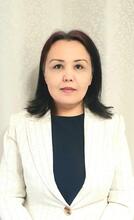
Dilrabo Tosheva, Postdoctoral Associate in Central Asian Studies and Lecturer in History of Art, spoke with Yale about her life and work at the university during the 2023-24 academic year. Tosheva is a historian and architectural historian specializing in the artistic production of pre-modern Central Asia, Turkic, and Persian cultural spheres.
Tell us more about the path that brought you to Yale.
I am one of a few scholars who has an educational background from Central Asian academia. I was born in Bukhara, Uzbekistan and got my bachelor’s and master’s degrees in history from Bukhara State University. Between 2014 and 2017, I did my MSc degree at the University of Wisconsin-Milwaukee, and in 2022, I received my PhD degree from the University of Queensland, one of the top Australian universities. Both my American and Australian degrees were received from architectural departments, hence, I can rightly call myself a half-historian and half-art/architectural historian. Before moving to the U.S. to work at Yale, I was working at my home university in Australia as an adjunct instructor and independent researcher. I am the inaugural Postdoctoral Associate in Central Asian Studies, and I think I am lucky to have this opportunity. There are not many postdoctoral positions for researchers with a focus on Central Asia, and when scholars like me apply for “all regions, all periods” kinds of research and teaching opportunities, our chances are too slim to get selected. As a representative of a region that is underrepresented in academic discussion and teaching, I look forward to contributing to Yale’s commitment to make American academia a truly inclusive environment through my own research and teaching.
What has your work as a Postdoctoral Associate at Yale entailed?
At Yale, I am primarily working on my book project, En Route to the Taj Mahal: Transformation of Royal Identity and Architecture under the Qarakhanids in Pre-Mongol Central Asia. Apart from working on this book project, in the spring I will teach an upper-level undergraduate seminar, Introduction to Central Asian Art and Architecture.
What is the inspiration behind En Route to the Taj Mahal?
Here again, I must mention that “Taj Mahal” is a hook word for the wider Anglophone audiences who might know only a little about this region and its material culture. But the book is not primarily about the Taj Mahal. Rather, it is about the political-cultural and economic changes in medieval Central Asia that gave birth to one of the key architectural elements of Islamic architecture – the Islamic façades, the most famous instance of which can be seen at the Taj Mahal. In literature, it is acknowledged that the Islamic façades, also known as pishtaq, emerged in Central Asia first, at the end of the tenth and eleventh centuries, and this was one of the most important transformations in the architecture of the region that influenced the monumental architecture of the wider Islamic world. However, due to the stylistic/descriptive nature of previous scholarship, there is no specialist literature that explains the context and technicalities of this change. My book deconstructs the politically motivated stylistic interpretation of architectural forms and elements and aims to understand why this architectural transformation happened in this part of the periphery of the Islamic world. Why does this story matter? The historians conveniently study the early modern era, and they think that the medieval era is not very important. But studying the early period of Islamic architecture and society shows that there were already templates left by early societies and dynasties, both in terms of architecture and power consolidation.
What Yale resources have been especially helpful in your work?
I have been told that Yale has one of the best libraries in the United States and, by extension, in the world, and this is true. I can’t point to a particular archival catalogue, because sources on Central Asia are scattered across the world. However, I am enjoying the rich primary and secondary sources the Orbis library catalog offers, and the interlibrary loan system works very fast here at Yale. In Australia, it was hard to get my hands on sources located overseas, and Covid made things even more difficult. It is not easy to locate and access secondary sources published in the former Soviet Union, but Yale librarians at Sterling and Marx are doing an excellent job so far!
Could you elaborate on your interactions and collaborations with Yale students?
Since I will be teaching in the spring semester, I hope to have more engaging interactions with Yale students starting in early 2024. So far, I can see that my course is filling up with enrollments and I’m receiving some enthusiastic emails from Yale students showing their interest in my course.
What have been the highlights of your time at Yale so far?
I enjoyed my experience of watching the football game between the Yale Bulldogs and Morgan State University. The Bulldogs won the game 45-3 – what a massive victory!
How do you plan to utilize the knowledge, resources, and connections you will have acquired at Yale in your future career?
Yale is renowned for its academic excellence and rigorous programs. It offers a wealth of resources, from rich libraries and research facilities to expert faculty members and alumni networks. I intend to leverage these resources to further my research and projects, ensuring that I stay at the forefront of my field and make meaningful contributions.
Learn more about Central Asia happenings at Yale by visiting the recently launched Central Asia Initiative website.
Interviewed by Oliver Wolyniec

